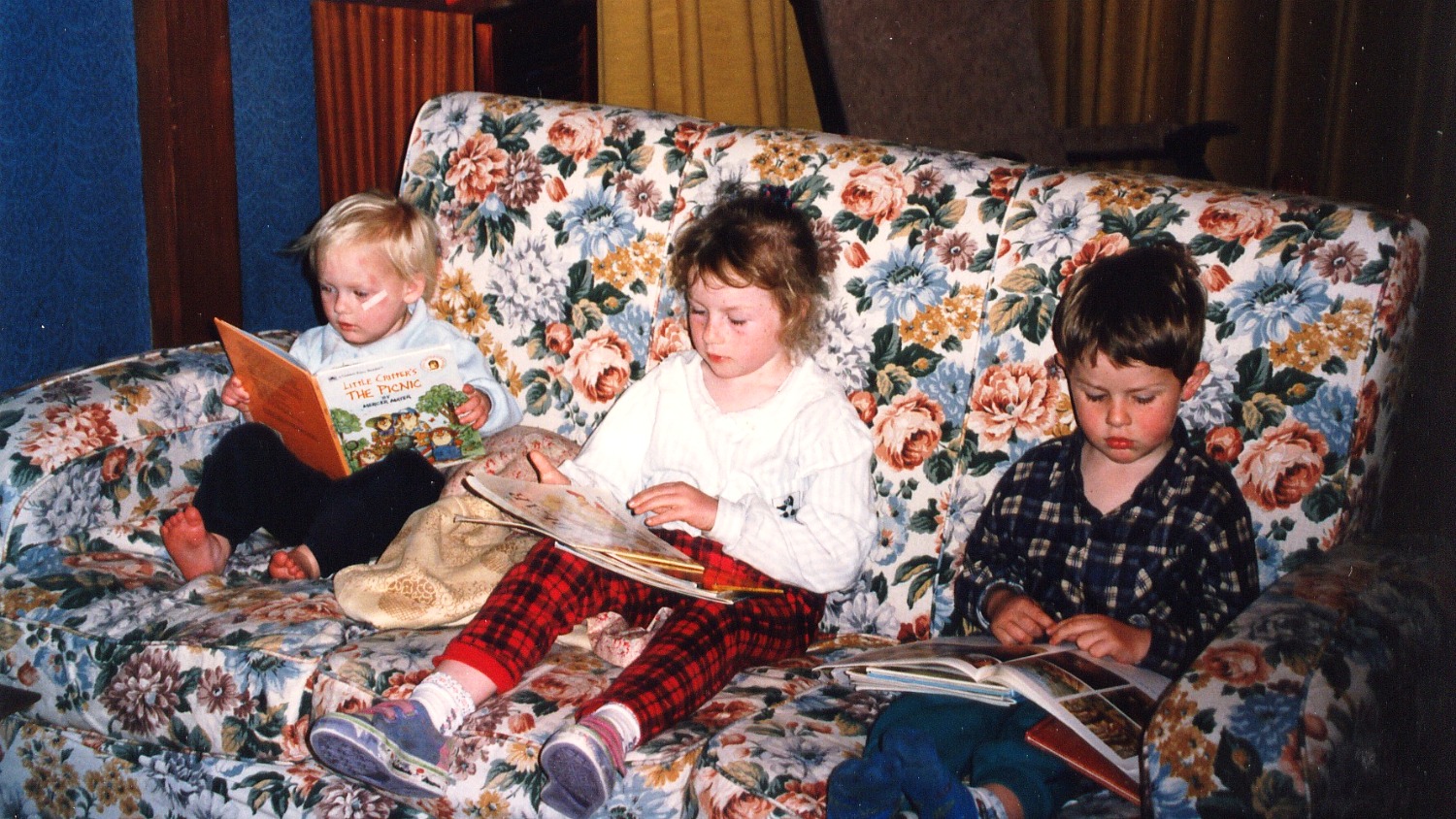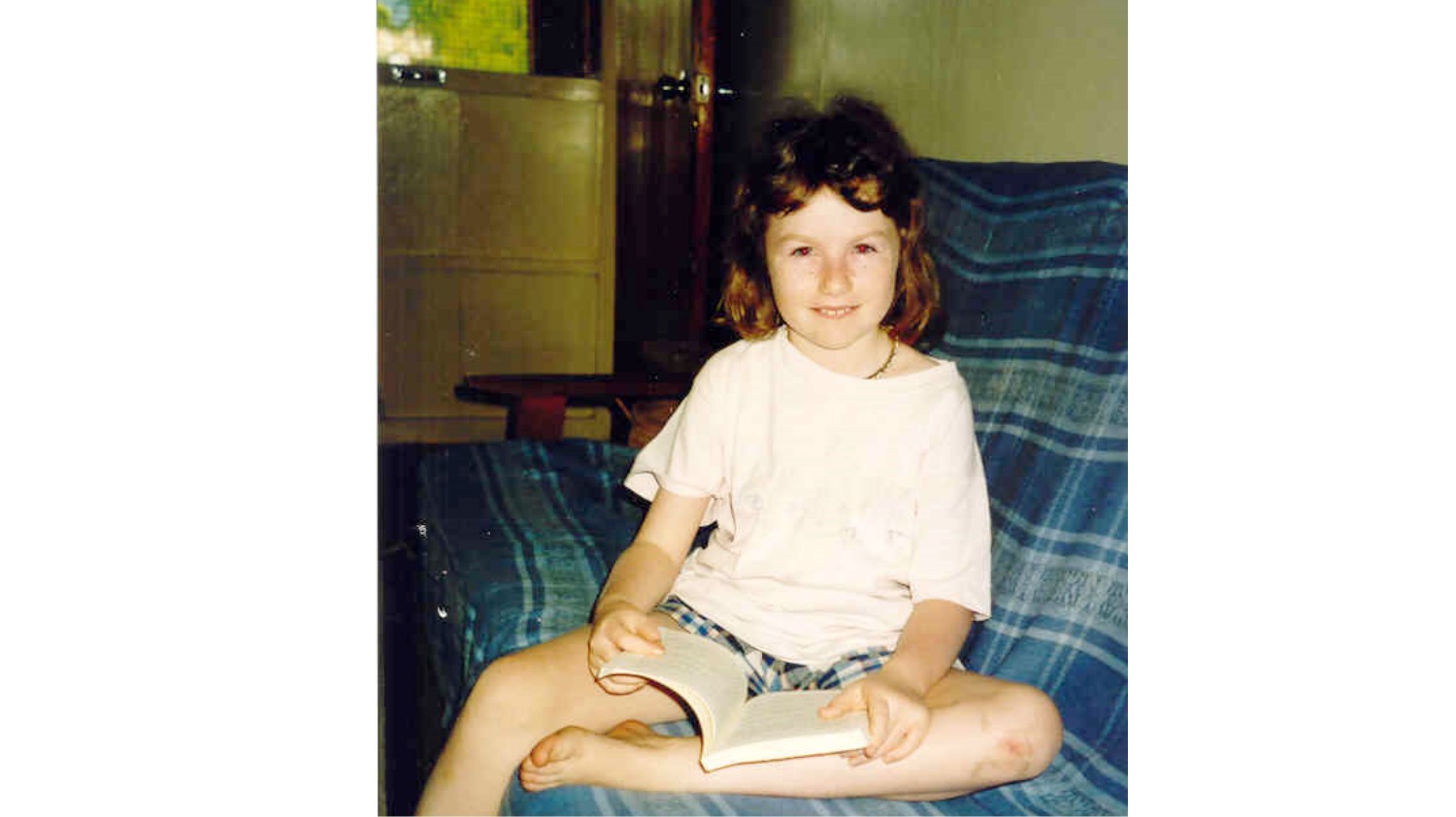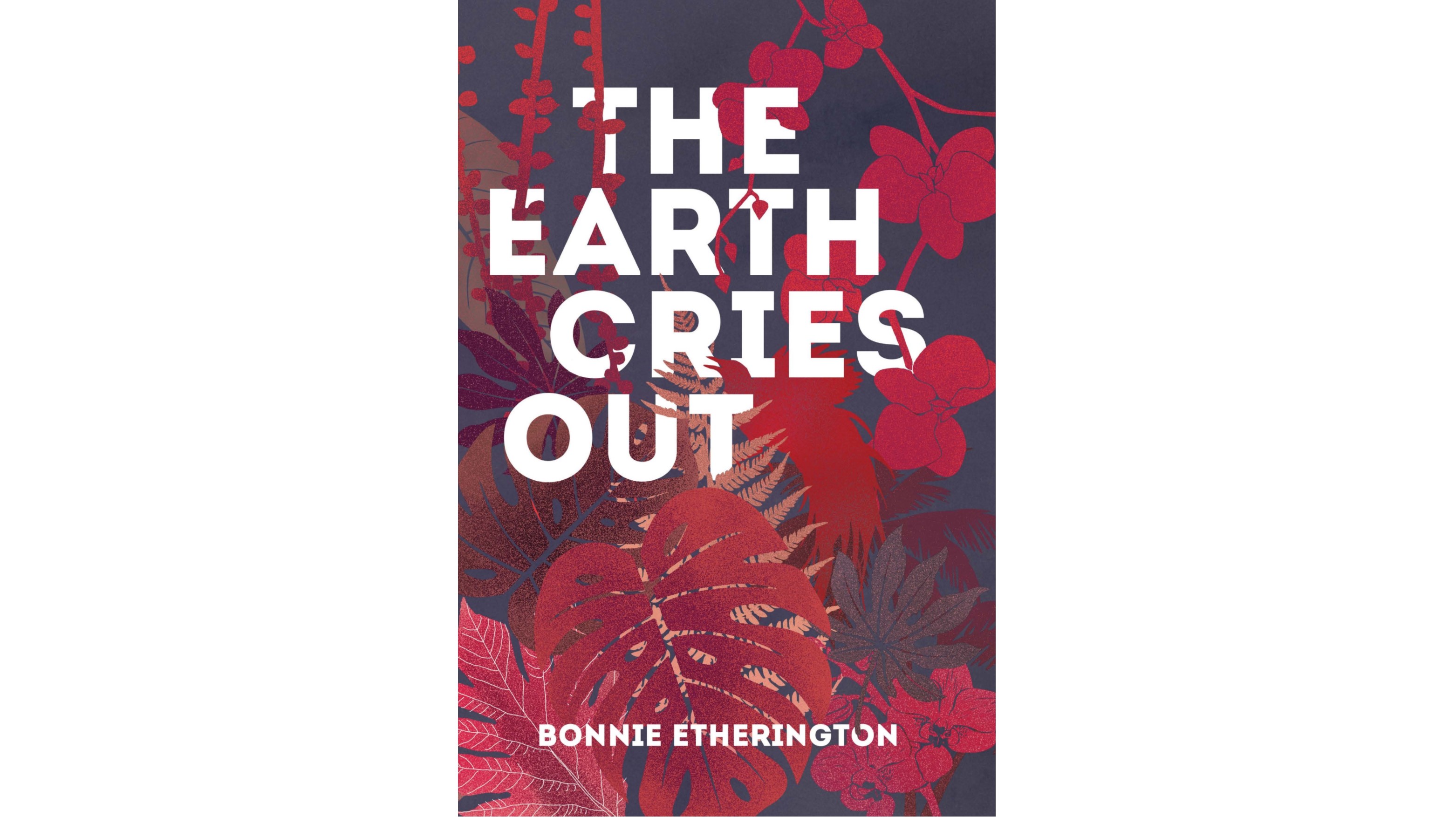Bonnie Etherington, author of the multi-award-nominated novel The Earth Cries Out, reminisces about the stories and books from her childhood, how they connected her to New Zealand from West Papua, and considers language’s ability to give voice and pass on stories.

My dad told us brain stories. We called them brain stories because they came from his brain and not from the pages of a book. The brain story I remember most clearly is the one where a discarded battery comes to life in a rubbish pit. The battery lives in an empty baked bean tin and fights off cockroaches and rats with a pin sword. As a seven year old, in one of my early literary endeavours, I shamelessly plagiarised this story and won first place in a language arts competition. Sorry, Dad. Maybe one day we can co-write it together for real?
Being horrible children, my siblings and I used to say my mother didn’t have a brain because she didn’t tell brain stories. But she did tell us memories. As a child of Pākehā New Zealand parents growing up in a small village in West Papua, I used these memories to build a version of New Zealand in my mind: a New Zealand filled with real milk instead of the powdered kind, Weet-Bix, lambs my mother tried to save from the meat-works, and where my mother met my father and he kissed her in an Auckland library. My Dad’s memories built my storied New Zealand, too. One where he went possum hunting in the Tasman bush, picked apples around Nelson, and scared my grandmother with eels he kept in the laundry. Of course, these memories could only give me bits and pieces of New Zealand, but I grasped at them.
As a child of Pākehā New Zealand parents growing up in a small village in West Papua, I used [my mother’s] memories to build a version of New Zealand in my mind…
So the stories that mattered to me did not always come in book form, but I also loved to read and wanted every book I could get my hands on. When I first started reading I got books through NZ Correspondence School. One in particular stands out: Robyn Kahukiwa’s Taniwha. In this book, a boy meets a taniwha at the river but has trouble convincing other people that the taniwha exists. I also remember David Butler and Don Merton’s The Black Robin, a conservation story about saving the black robin in the Chatham Islands. My other exposures to New Zealand children’s literature came through the usual suspects: Joy Cowley and Lynley Dodd, primarily. I especially liked Cowley’s grandparent or elderly characters, as I did not see my own grandparents very often.
My parents never really worried about or limited the kinds of books I read, as far as I know. As long as I could get them, I read them. When I was slightly older, my siblings and I were allowed to borrow ten books each from the small mission school library a few mountains over, every few months. Ten books, because the only way in or out of the village where we lived was via a small plane, and we had weight limits. I quickly developed a system of flattery, bribery, manipulation, and/or threatening my siblings into including books I might like in their quota.
The books I most gravitated to were the books that did not shy away from difficult things like anger and sadness and trauma, but still included moments of hope.
The books I most gravitated to were the books that did not shy away from difficult things like anger and sadness and trauma, but still included moments of hope. Such as, the Redwall series by Brian Jacques, full of animals that, male and female, defended their homes, cooked enormous amounts of food, and sometimes died tragically. Earlier, there was The Maggie B., by Irene Haas, which is still my favourite picture book. In it, a girl dreams up her very own ship and captains it effortlessly, along with a menagerie of animals and her baby brother. There was also Mary Norton’s The Borrowers, about a family of mouse-sized people who end up having all kinds of adventures because of their curious daughter, Arrietty. Inspired by The Borrowers and John Peterson’s The Littles series, I spent hours inventing stories for my own version of a tiny family. More recently, I couldn’t resist slipping these ‘Tinies’ into my novel. I kept a stack of small red notebooks where I recorded ‘data’ about this family, and other stories I made up.
I loved Grimm’s Fairy Tales—the old ones that had not yet been sanitised of severed feet and barrels filled with nails. I loved books about boarding schools, perhaps because the children in them often were isolated and lonely, and I understood that, despite having (what seemed like) a multitude of siblings. I read and reread a row of old Reader’s Digest issues from the late ’80s and early ’90s, left behind by some previous occupant in our house. My favourite articles involved medical procedures and near misses with death. They had titles like, ‘Nailed: A True Story of How a Man Survived a Nail Gun to the Heart’ and ‘Fighting For Her Life: Cougar Attack in Colorado!’ Based on stories like these I thought my adult life was going to involve a lot more construction accidents and wild animal attacks.

I went through a long phase of reading books about survival and independence like My Side of the Mountain and The Hatchet and Lord of the Flies. I wished more of those books had female central characters. I especially wished that more of them had female characters who were allowed to be angry, be brave, be all the kinds of flawed and complex things that the boys in my books were allowed to be.
One book I loved that included both a female main character, and a lot of anger and bravery, was Scott O’Dell’s Island of the Blue Dolphins. I have very mixed feelings about the book now, knowing that its non-Indigenous author appropriated the voices of Aleut peoples and represented them as vanishing. In fact, the vast majority the ‘survival’ themed books I glorified appropriated and/or erased Indigenous voices. For a really obvious example, see The Swiss Family Robinson.
I saw how government language policies that suppressed Indigenous languages kept my friends from understanding their grandparents’ stories…
I also saw how Papuan stories were being erased all around me. Obviously, I did not always know what I was seeing. But I saw how government language policies that suppressed Indigenous languages kept my friends from understanding their grandparents’ stories, and I also saw how the world in Papua was not always reflected in my books, but it was in those stories.
For several years my dad helped facilitate literacy classes in the village’s church. In those classes we practiced reading and writing in Nggem—the mother tongue of most of the people in the village, especially the older generation. Here, we, young and old, got to hear stories told in Nggem. The storytellers taught me about the power of stories to maintain and pass on knowledge in the face of great obstacles, including threats of genocide. And they made me aware of the very real cost of stealing or erasing someone else’s story.
So, the stories that formed my childhood, in book form or not, made me want to write in ways that try to give words to the things I see around me and the things that are sometimes lonely and sometimes hard to understand. But they also taught me to look for the silences, the gaps, the breaks, and to know when to move over, shut up, and make room for those who have been left out or had their stories stolen for far too long. Whether that is in our brain stories, in a Reader’s Digest, or in a book.

Bonnie Etherington
Bonnie Etherington is the author of The Earth Cries Out(Vintage NZ, 2017), which was shortlisted for the 2018 William Saroyan International Prize for Writing and longlisted for the 2018 Ockham New Zealand Book Awards. Her work has appeared in anthologies and journals in NZ and overseas, including in Guernica, Landfall, Meniscus, Headland, and Ika. She received her Master of Creative Writing from Massey University in 2013, and currently lives in Chicago with her husband and cat while she works towards a PhD in Literature.



